Romania's rich medieval heritage is perhaps best illustrated by the many castles and fortresses.
While castles built from the 14th to the 18th centuries are strong and austere fortresses built mainly for defense against invaders,
those erected beginning in the 19th century are imposing and luxurious.
Most popular, with visitors from all over the world, include
the 14th century Corvin Castle, built on the site of a former Roman camp,
the elegant 19th century Peles Castle with its 160 rooms filled with priceless European art
and, of course, the Bran Castle, built in the mid-1300s and legendary home to Bram Stoker's Count Dracula.
The nine centuries of Saxon presence in Transylvania region (central Romania)
resulted in a cultural and architectural heritage unique in Europe.
Transylvania is home over 200 Saxon villages dotted with churches and fortifications built between the 13th and 15th centuries.
Seven of the fortified Saxon churches in Transylvania:
Biertan, Calnic, Darjiu, Prejmer,
Saschiz, Valea Viilor and Viscri
have been designated by UNESCO as World Heritage Sites.
A visit to these quaint villages, located amidst lush farmland and green rolling hills,
will give visitors a taste of the long-gone medieval times.
Best-known, easily accessible, castles and fortresses in Romania
Biertan Fortified Church
Where: village Biertan in TransylvaniaNearest towns: Sighisoara and Medias
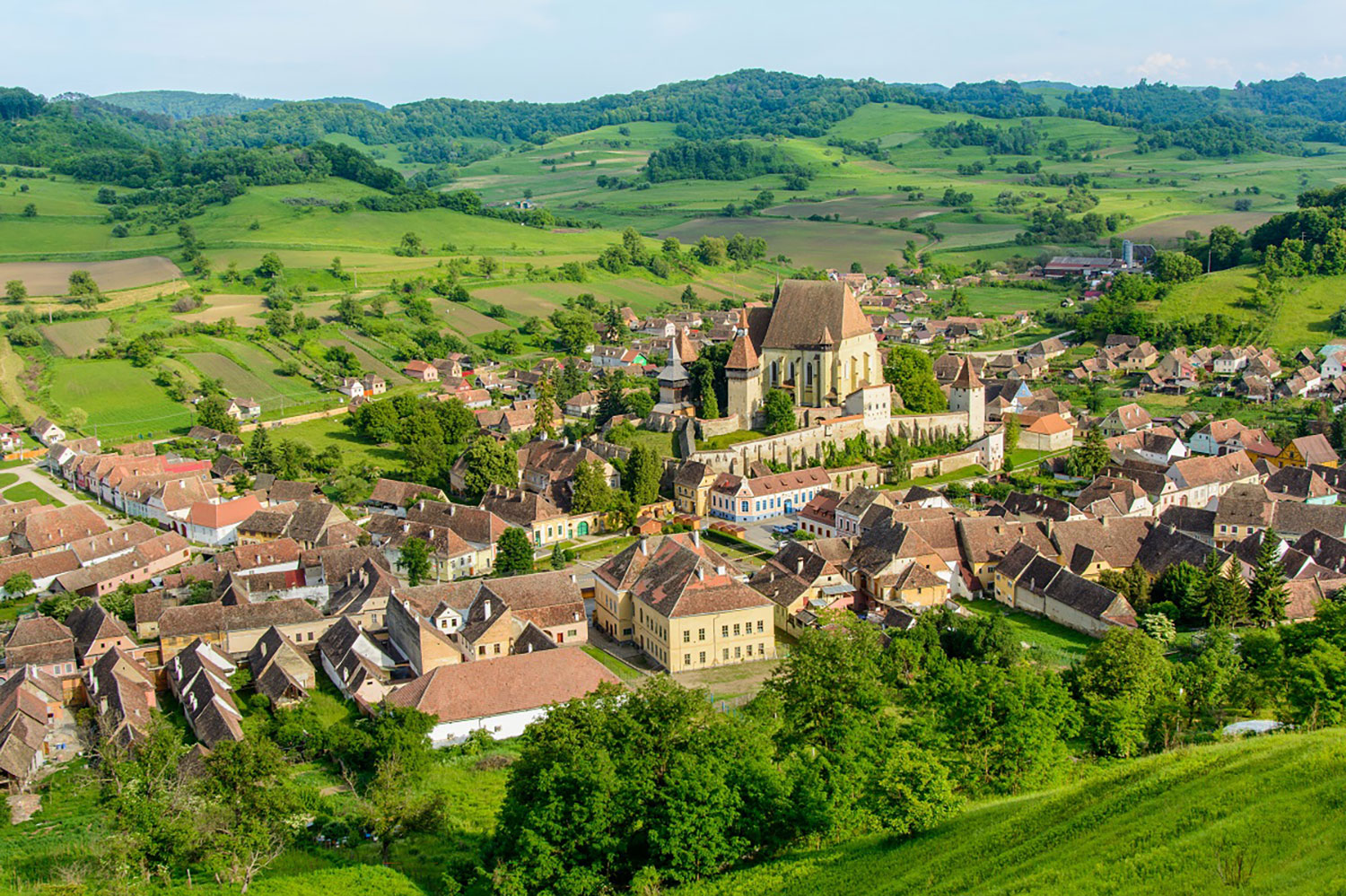
Village of Biertan (German: Birthalm), first mentioned in an official document in 1283, is home to one of the largest and most impressive medieval strongholds in Transylvania: Biertan Fortified Church, an UNESCO World Heritage Site.
Surrounded by charming Saxon houses and vineyards, this 15th century fortified church is perched high on a hill in the middle of village Biertan. Three tiers of 35-foot-high defensive walls, connected by towers and gates, encircled the complex, making the church impossible to conquer during medieval times.Featuring late-gothic architecture with heavy doors and double exterior walls, the church boasts the largest Transylvanian multi-paneled wooden altar and a remarkable wooden door which once protected the treasures in the sacristy.
Visitors can also admire the still-strong towers built to dfend the church: the Clock Tower, the Bell Tower, the Gate Tower and the Bacon Tower.
Within the grounds are several other interesting buildings, including the Prison Tower - which once served marital counseling purposes.
Biertan Fortified Church more info.
Bran Castle
Where: village Bran, Transylvania
Nearest city/town: Brasov and Sinaia
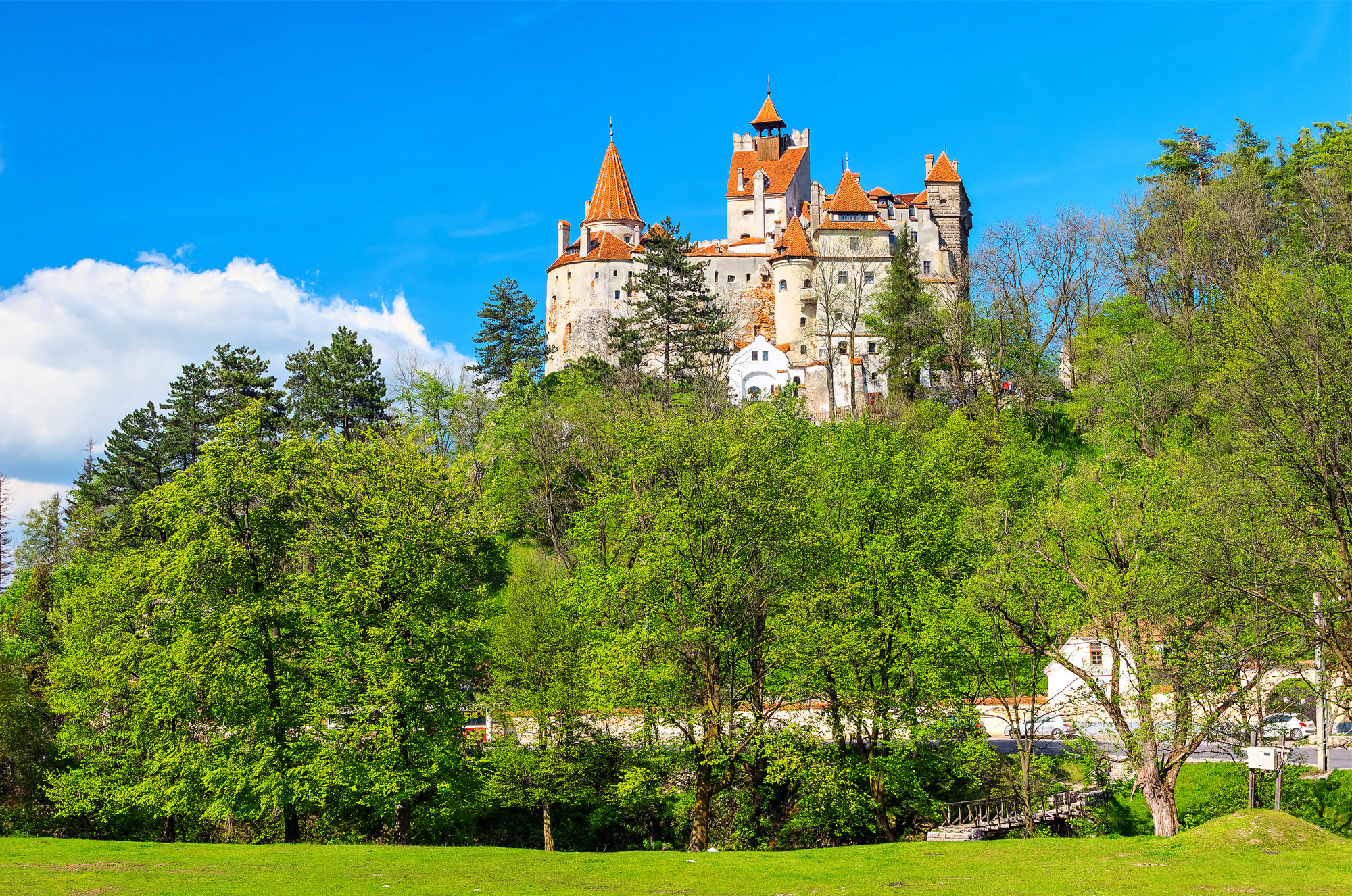
Surrounded by an aura of mystery and legend and perched high atop a 200-foot-high rock,
Bran Castle owes its fame to its imposing towers and turrets as well as to the myth created around Bram Stocker's Count Dracula.
Built on the site of a Teutonic Knights stronghold dating from 1212, the castle was first documented in an act issued by Louis I of Hungary on November 19, 1377, giving the Saxons of Kronstadt (Brasov) the privilege to build the Citadel.
Although Stoker never visited Transylvania, the Irish author relied on research and his vivid imagination to create the dark and intimidating stomping ground of Count Dracula, leading to persistent myths that it was once the home of Vlad Tepes, ruler of Walachia. While the association with Dracula is sketchy at best, the castle continues to hold a strong attraction for all fans of the Count.
Narrow winding stairways lead through some 60 timbered rooms, many connected by underground passages, which house collections of furniture, weapons and armor dating from the 14th to the 19th centuries.
Bran Castle more info.
Calnic Fortified Church
Where: village Calnic in Transylvania
Nearest towns: Sebes, Alba Iulia, Sibiu
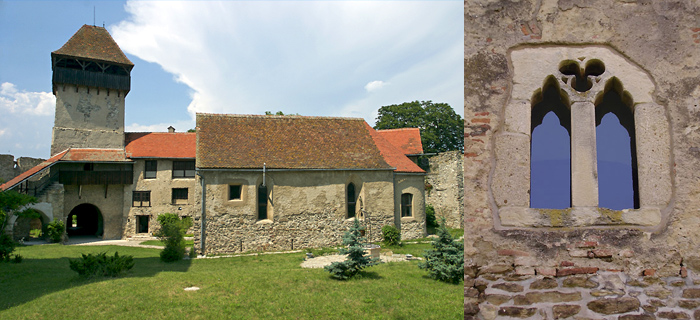
Built in the 13th century by Count Chyl de Kelling, the Fortified Church at Calnic (German: Kelling) is one of the most imposing defensive structures in Transylvania. First documented in 1269, the fortress served as a residence for Saxon nobility until 1430, when it was sold to the peasant community of Calnic.
Enclosed by one and a half rings of high walls fortified with a defensive tower to the south and a gate tower to the north, the fortress withstood several Ottoman sieges.
The five-story-high Siegfried Tower, the landmark of the fortress, is endowed with defensive corridors and firing windows. An on-site medieval art museum displays various artifacts.
Calnic Fortified Church more info
Jidvei (Bethlen-Haller) Castle
Where: village Cetatea de Balta in Transylvania
Nearest towns: Blaj, Medias, Alba Iulia
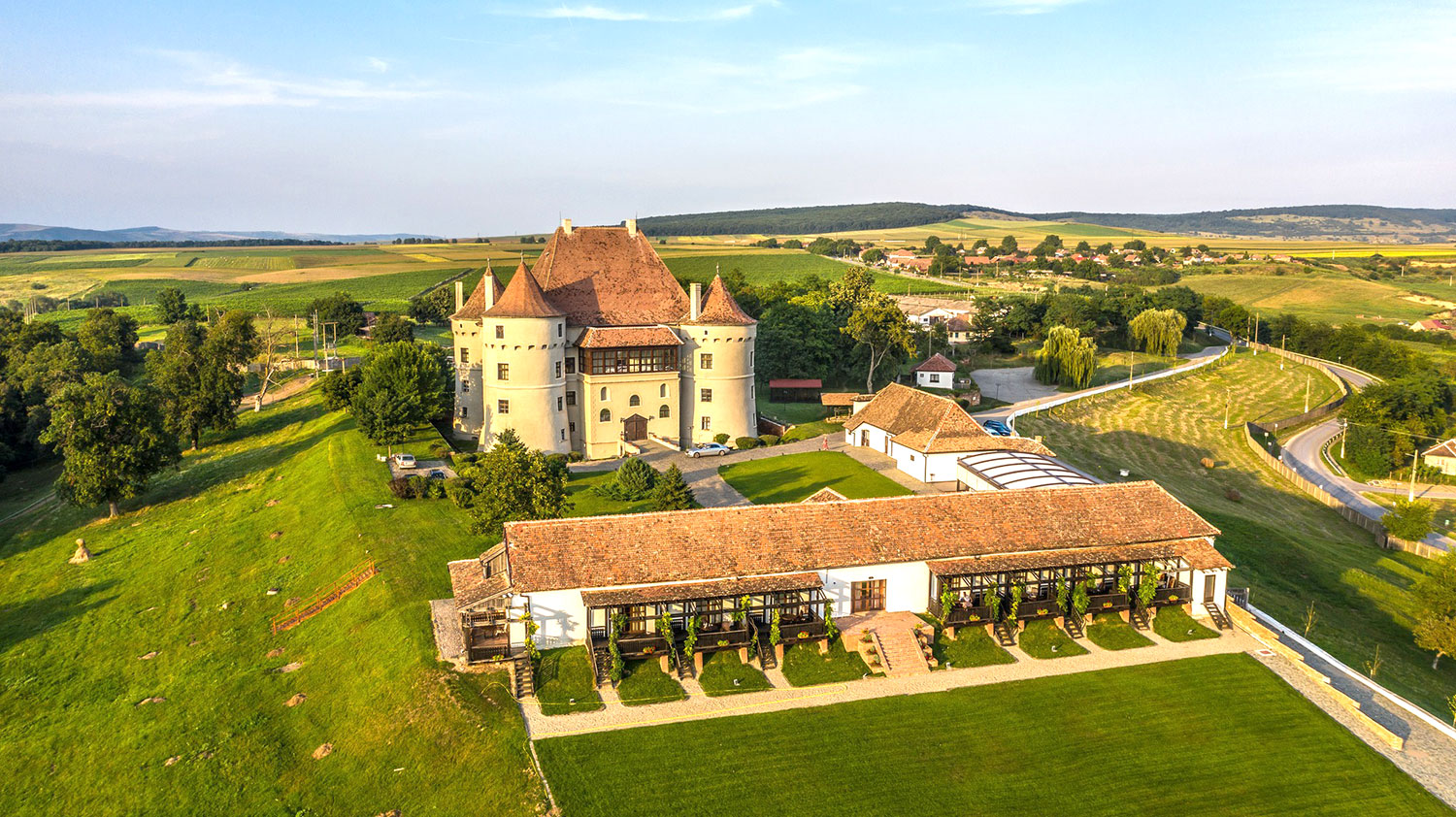
Bethlen Castle was built in the 16th century in the French Renaissance style and restored in the 17th and 18th centuries when Baroque elements were added.
The Reformed Church, situated next to the Castle, is a 13th century structure.
The Jidvei (Bethlen-Haller) castle, with its eclectic combination of architectural styles, is located on the outskirts of Cetatea de Balta and it ofers its guests with quaint views of the village.
Jidvei, one of Romania's premier white wines wineries is a five-minute drive from Cetatea de Balta.
The Jidei (Bethlen-Haller) castle can host business meetings, conferences, private dinners or wedding receptions.
Various exquisite local wines and original menus, that include traditional dishes prepared by local chefs, will, most likely, please even the most discerning palates.
Jidvei (Bethlen-Haller) Castle more info.
Cisnadie Fortified Church
Where: village Cisnadie in Transylvania
Nearest town: Sibiu
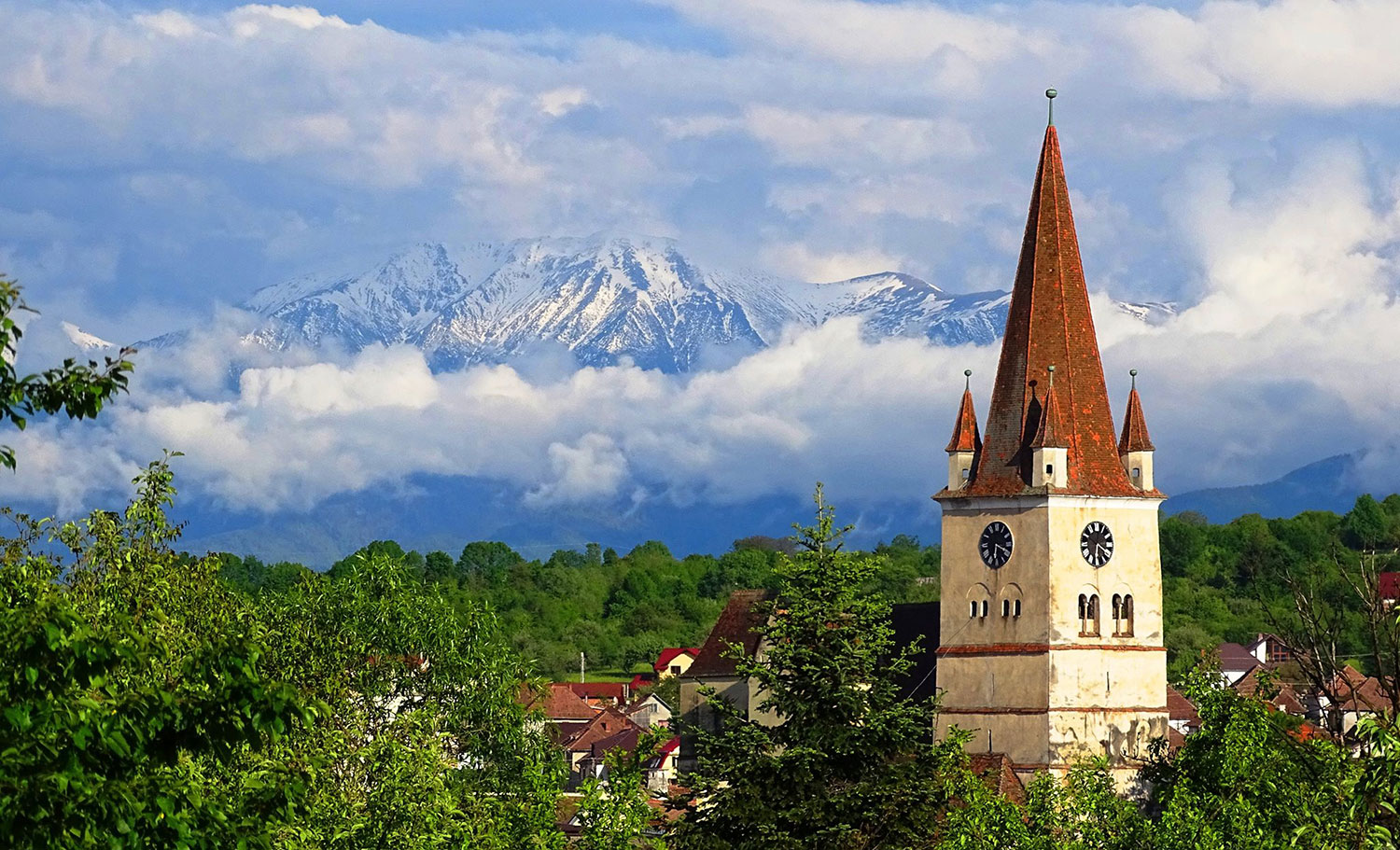
Originally built in the 12th century as a Romanesque basilica, Cisnadie church was fortified during the 15th century to protect the local Saxon population against repeated Ottoman raids.The fortification process included the construction of fortified towers over the two side entrances and the choir, the building of a double structure of defense walls, a moat and several defensive towers along the walls. The clock installed in the 195-feet high (bell and clock) tower has been working since 1868; no repairs were ever needed.
Cisnadie Fortified Church more info.
Corvin Castle
Where: town of Hunedoara in Transylvania
Nearest city/town: Deva, Sibiu and Timisoara
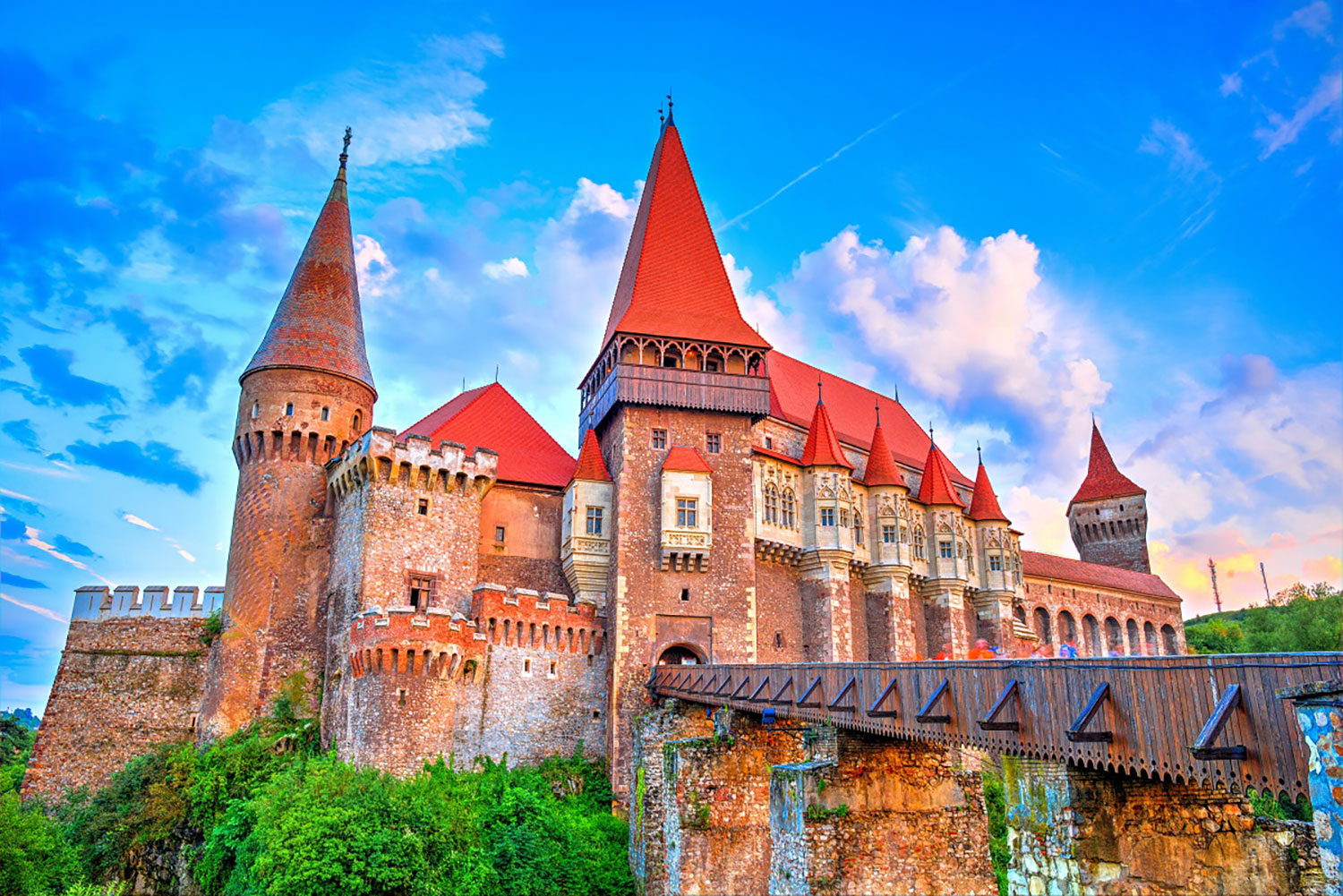
The most spectacular Gothic-style castle in Romania, Corvin was commissioned by the Anjou family
and soon erected on the site of a former Roman camp.
The castle served initially as a fortress and - in the mid-14th century - became the residence of Transylvania's ruler, Iancu de Hunedoara.
Iancu upgraded the fortress transforming it into the most stunning castle in Transylvania.
The beautifully preserved structure features a sumptuous Knights' Hall,
an impressive drawbridge, high buttresses, inner courtyards, a chapel and some 50 rooms resplendent with medieval art.
Corvin Castle more info.
Cristian Fortified Church
Where: village Cristian in Transylvania
Nearest city: Brasov
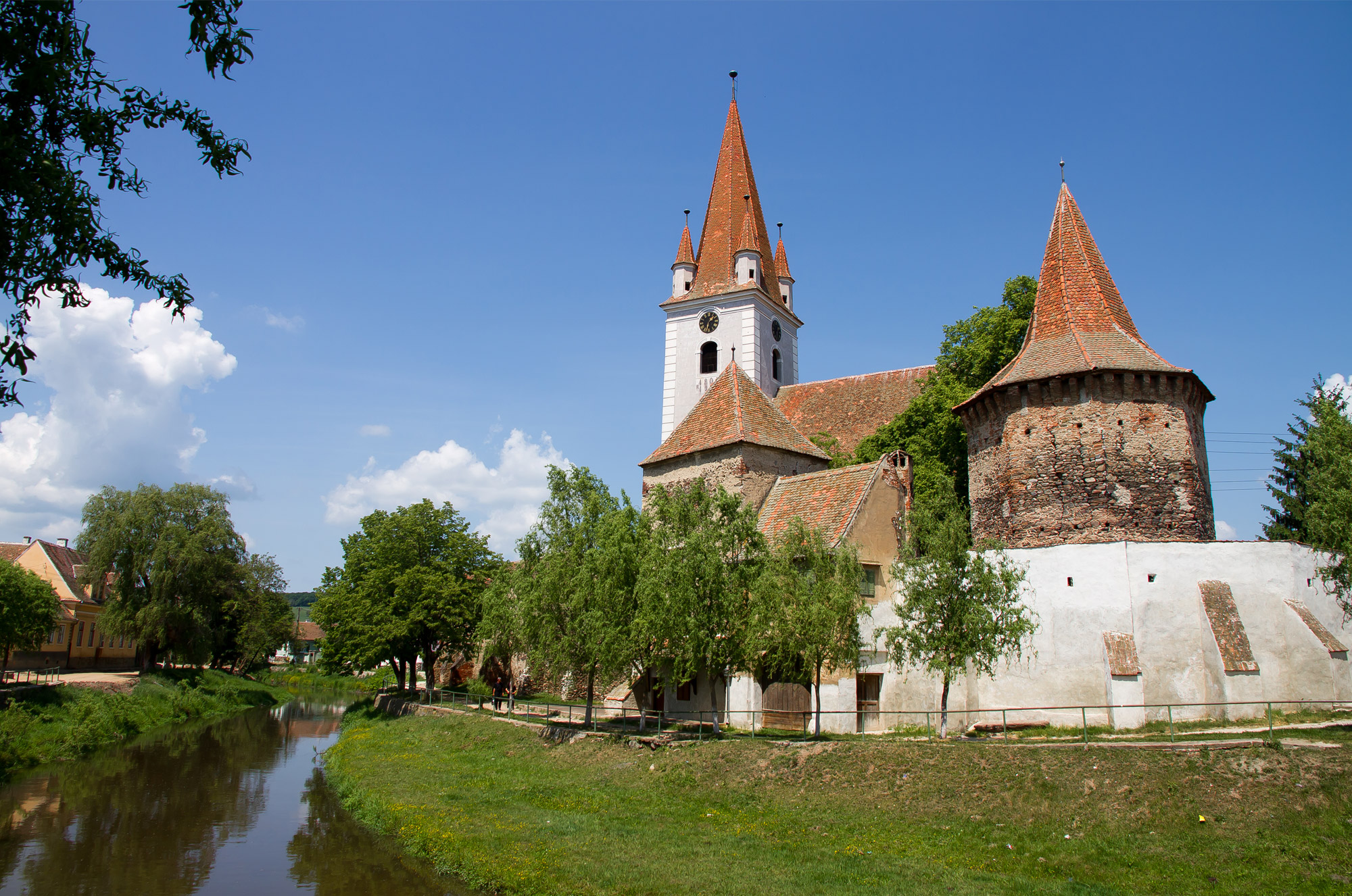
The gothic-style Evangelical Church (1495) in the village of Cristian stands on the site of a 13th century Roman basilica.
Built in the 16th century, the church is enclosed by two rows of walls guarded by towers.
Two underground tunnels allowed villagers to flee from the fortress to the forest or to an old monastery in times of siege.
Cristian Fortified Church more info.
Darjiu Fortified Church
Where: village Darjiu in Transylvania
Nearest towns: Sighisoara and Odorheiu Secuiesc
The fortified church at Darjiu was initially built in Roman style in the 14th century, and later rebuilt in gothic style. It was fortified in the 16th century when locals drew inspiration from the fortified churches of neighboring Saxon villages.
The Gate Tower preserves its initial form, with openings for shooting missiles; wooden shutters provided protection against incoming projectiles.
The original interior frescoes, some of the most impressive Transylvanian medieval works, have been preserved.
Darjiu Fortified Church more info.
Fagaras Fortress
Where: town of Fagaras in Transylvania
Nearest cities: Sibiu and Brasov
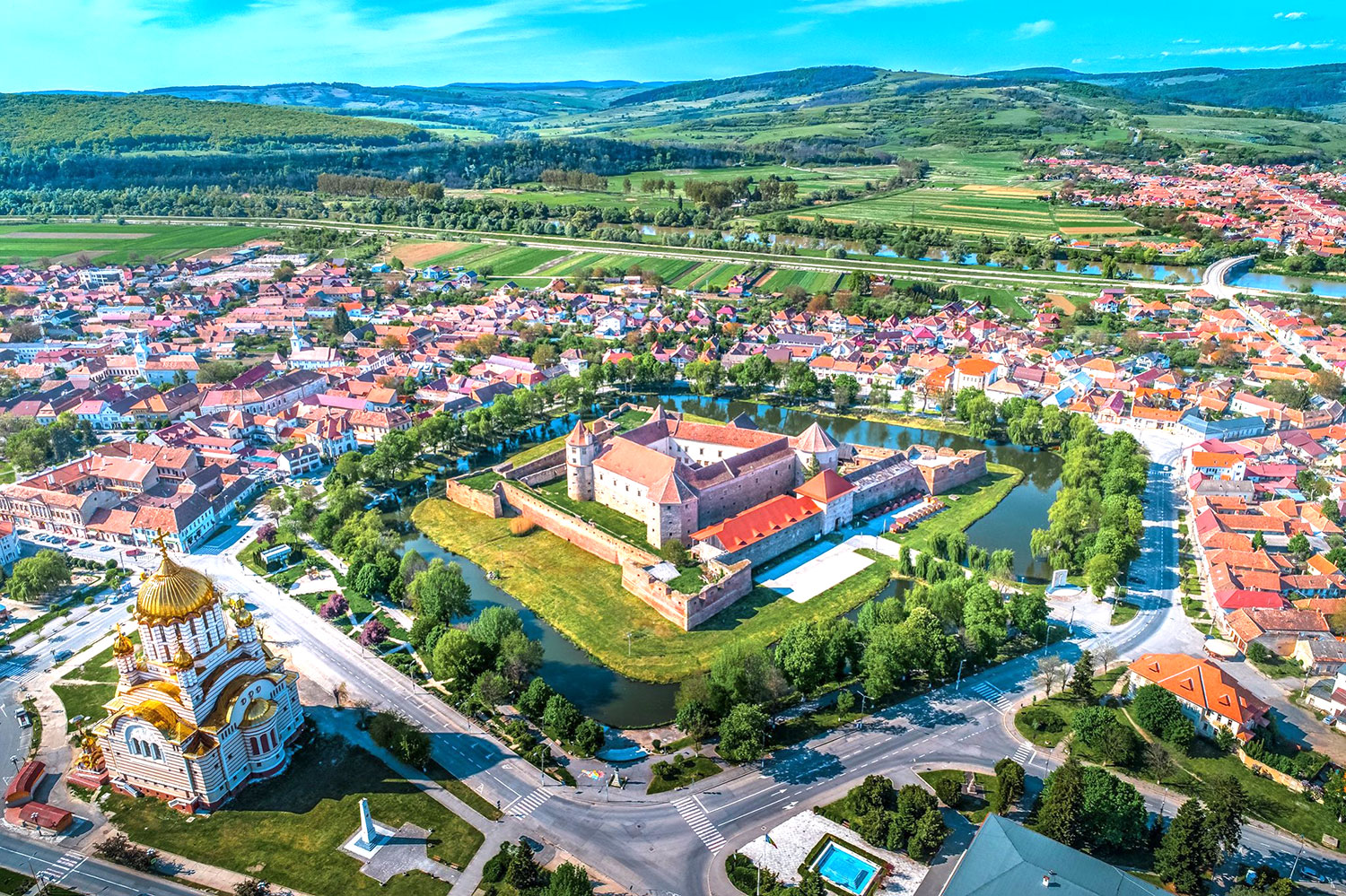
Built in 1310 on the site of a former 12th century wooden fortress (burned by the Tartars in 1241), Fagaras was enlarged between the 15th and 17th centuries and was considered one of the strongest fortifications in Transylvania. The fortress was surrounded by a deep moat which, in times of war or social unrest, could easily be filled with water from a nearby mountain brook. A bridge over the moat provided the only access point. The fortress boasts three floors and five towers.
The beautifully preserved fortress houses the Fagaras County Museum, displaying Roman artifacts, a collection of medieval weapons and traditional folk crafts.
Fagaras Fortress more info.
Harman Fortified Church
Where: village Harman in Transylvania
Nearest city: Brasov
Located in the heart of Harman (Honigburg in German, meaning Honey Castle) village,
this fortified church dates back to the 13th century when Saxons built the original structure.
Strong walls and bulwarks surrounded the church and on its sides, massive towers were added.
The choir was built in a square shape with a vault resembling a cross.
It was surrounded by two chapels, indicating the influence of the Cistercian style.
This influence can also be observed in the still-standing original round windows with four lobes in the upper part of the church.
The fortified church boasts two chapels.
Harman Fortified Church more info.
Peles Castle
Where: town of Sinaia, Walachia region
Nearest cities: Brasov, Ploiesti and Bucharest
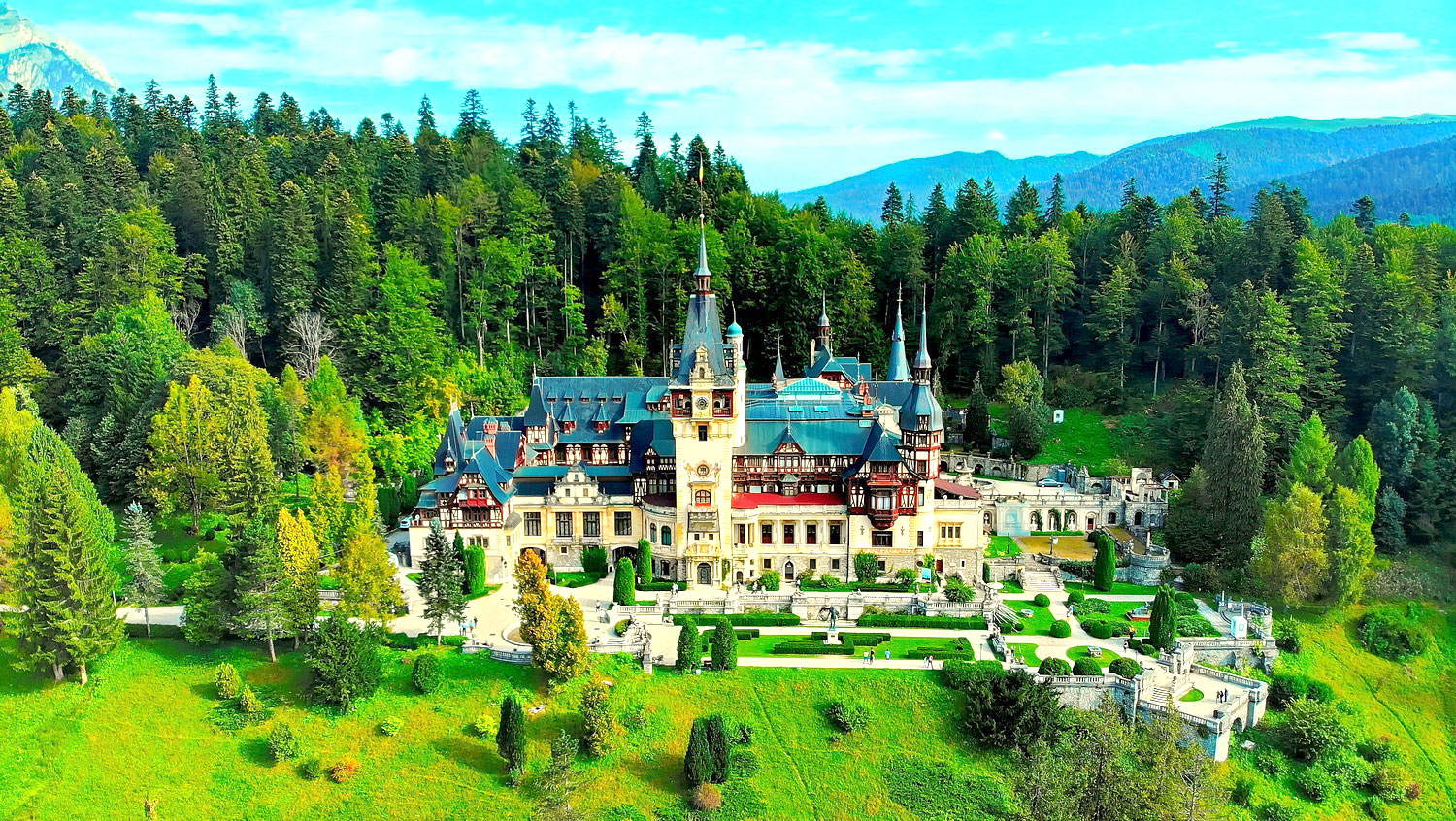
Nestled at the foot of the Bucegi Mountains in the picturesque town of Sinaia, Peles Castle is a masterpiece of German new-Renaissance architecture, considered by many one of the most stunning castles in Europe.
Commissioned by King Carol I in 1873 and completed in 1883, the castle served as the summer residence of the royal family until 1947.
Its 160 rooms are adorned with the finest examples of European art, Murano crystal chandeliers, German stained-glass windows and Cordoba leather-covered walls.
Also worth exploring in town is Sinaia Monastery, founded by Prince Mihai Cantacuzino in 1695, and named after the great Sinai Monastery on Mount Sinai. The monastery served as the residence of the royal family until Peles Castle was built, and now is home to a monastic establishment.
It was the first European castle entirely lit by electrical current; electricity was produced by castle's own plant.
The first movie projection in Romania took place in 1906 in the castle's Theater Room.
Sinaia is also a popular, year-round, tourist destination which offers great options for skiing, hiking, wildlife viewing.
Peles Castle more info.
Poenari Fortress
Where: village Arefu, Walachia region
Nearest town: Curtea de Arges
The ruins of Poienari Fortress stand high on a cliff overlooking the Arges River,
at the foothills of the Carpathian Mountains.
Commissioned at the beginning of the 13th century by the rulers of Walachia (southern Romania),
the fortress changed names and residents a few times over the centuries; eventually, it was abandoned and left in ruins.
Prince Vlad Tepes (Vlad the Impaler - aka Draculea) recognized the potential of the location
and upon taking over the throne, he ordered that the structure be repaired and consolidated, turning it into his secondary fortress.
When the Ottomans attacked and captured the fortress in 1462,
Vlad escaped via a secret passageway leading north - to Tansylvania - through the mountains.
Although the castle was used for many years after Vlad's death in 1476,
it was eventually abandoned again in the first half of the 16th century
and left to the ravages of time and weather.
In 1888, a major landslide brought down a portion of the castle which crashed into the river far below.
The fortress underwent repairs and the remnants of its walls and towers stand to this day.
Poenari fortress more
info.
Prejmer (Tartlau) Fortified Church
Where: village Prejmer in Transylvania
Nearest city: Brasov
The largest fortified church in southeastern Europe, Prejmer
(Tartlau in German) was built by Teutonic knights in 1212-1213.
Prejmer is defended by strong surrounding walls are 40-feet high and 15-feet thick.
Historical records attest that in its 500 years of existence, the fortress was besieged 50 times.
However, it was only captured once, in 1611 by Gabriel Báthori, Prince of Transylvania;
in fact, the fighters defending the fortress were defeated by thirst and surrendered only after running-out of drinking water.
Access to the church was through a 100-foot-long arched passage and two gates.
Each village family had a designated room for shelter in case of attack.
The red-roofed wall accommodated 272 rooms, stacked over four stories and linked by wooden staircases.
Prejmer Fortified Church more info.
Rasnov Fortress
Where: town of Rasnov in Transylvania
Nearest city: Brasov
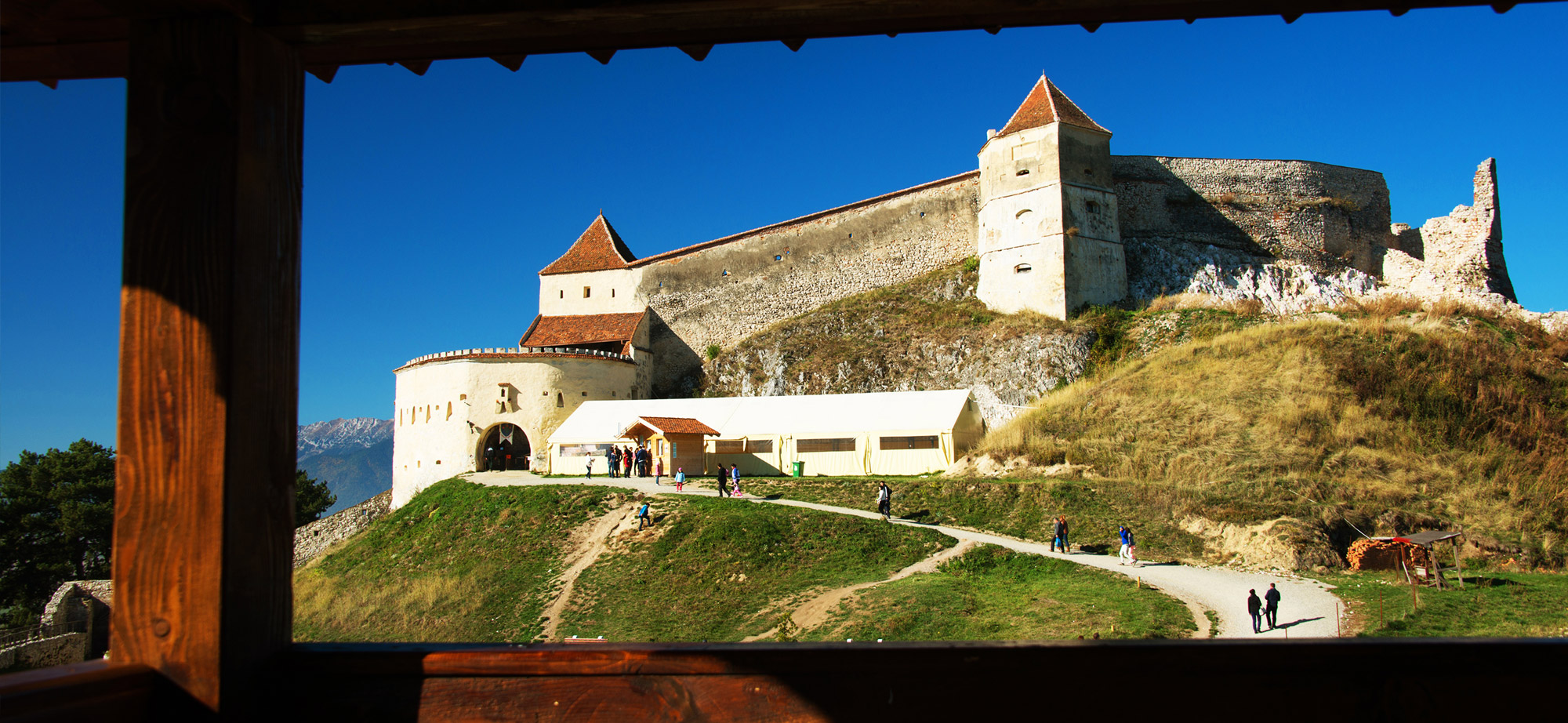
Rasnov Fortress (Rosenau in German), is located on a rocky hilltop in the Carpathian Mountains,
650 ft. above the town of Rasnov. First mentioned in an official document in 1331,
the fortress was built by Teutonic Knights as protection against invading Tartars and was later enlarged by the local Saxon population.
Strategically located on the commercial route linking the provinces of Transylvania and Walachia,
Rasnov differs from other Saxon fortresses in that it was designed as a place of refuge over extended periods of time.
Recently, the old fortress has been restored to its former glory and today, you can visit the impressive remains.
There is also a museum here, hidden behind the ancient walls, where you can find a skeleton buried beneath a glass floor,
as well as some other interesting artifacts.
Rasnov Fortress more info.
Saschiz Fortified Church
Where: village Saschiz in Transylvania
Nearest town: Sighisoara
Saschiz is renowned not only as home to one of Transylvania's most impressive fortified churches but also for its carpentry and wood-painting workshops and for the local blue pottery, born in Saschiz in 1702.
The Evangelical Church of Saschiz was built between 1493 and 1496 by Saxon colonists. It is noted due to its sheer size and the way the fortifying elements have been adapted to the shape of a church building. From the outside, the church appears to be a bulwark, but its defensive role is surpassed by the beauty of its gothic elements: huge arches, massive buttresses and decorative stone and brick aspects. Due to the significant distance between the center of the village and the hill on which a Saxon fortress was built in 1496, the fortified Evangelical church became the main refuge for the inhabitants of Saschiz during invading raids.
Saschiz Fortified Church more info.
Valea Viilor (Wurmloch) Fortified Church
Where: village Valea Viilor in Transylvania
Nearest town: Medias
Located in a region known for its vineyards (Vineyards Valley), Valea Viilor fortified church was built in 1263 in gothic style.
It was enlarged and further strengthened in the 15th and 16th centuries by adding 26-foot-tall and five-foot- wide walls.
An unique element is the well in the center of the church choir that provided water for the locals during sieges.
Inside the church, visitors can admire traditional Saxon furniture and decorations dating from the 15th and 16th centuries.
Valea Viilor Fortified Church more info.
Viscri Fortified Church
Where: village Viscri in Transylvania
Nearest town: Sighisoara
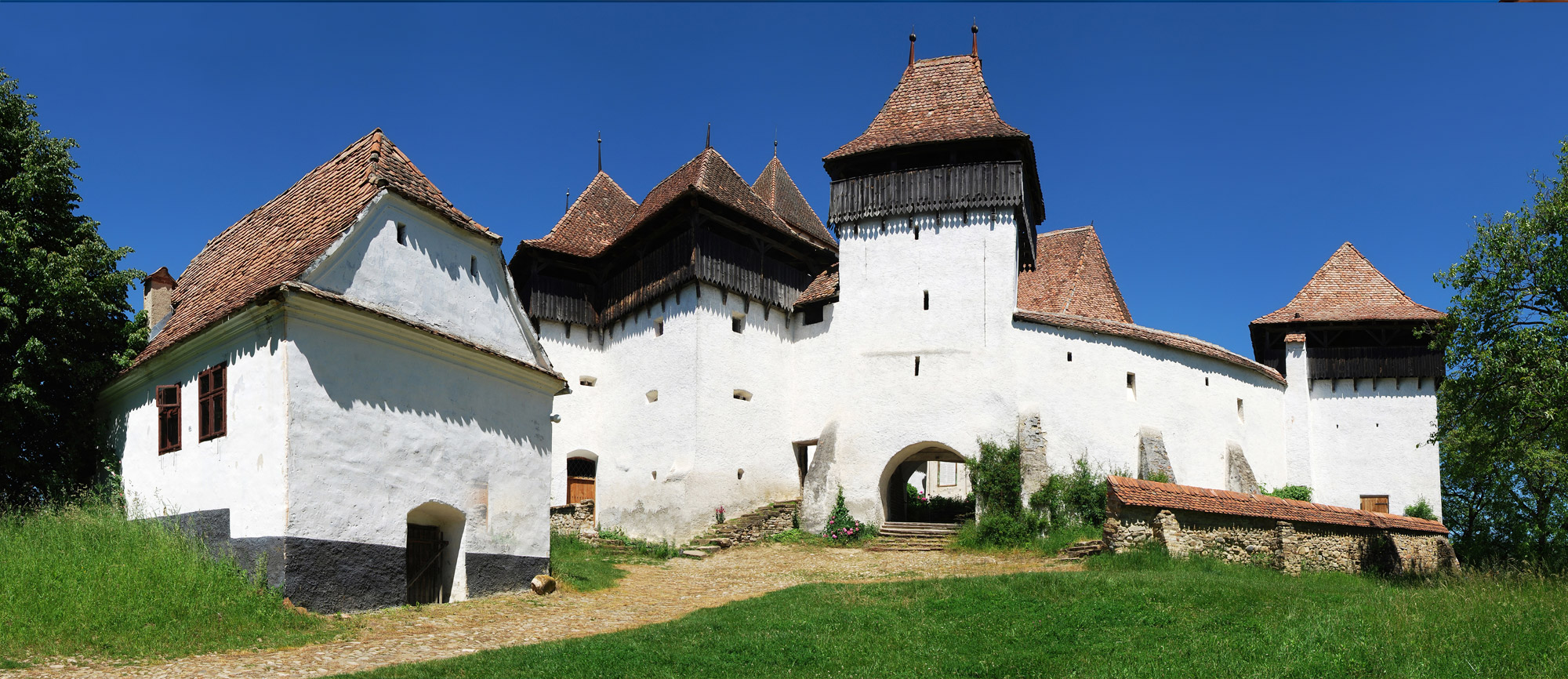
One of the most interesting Saxon fortified churches is located in the village of Viscri (Weisskirch in German).
The name Viscri comes from the German Weisse Khirche, meaning white church.
Unlike other Transylvanian fortified churches, Viscri was built around 1100 by the
Szekler (minority)
and taken over by the Saxon colonists in 1185.
This explains why this unique gothic church displays a plain straight ceiling rather than a traditional vaulted one
Viscri Fortified Church more info.


